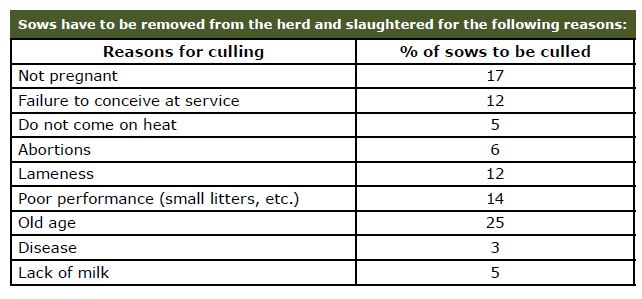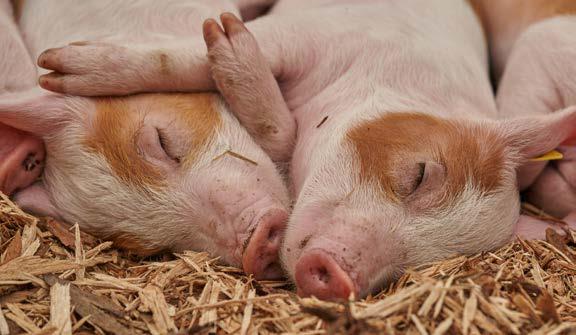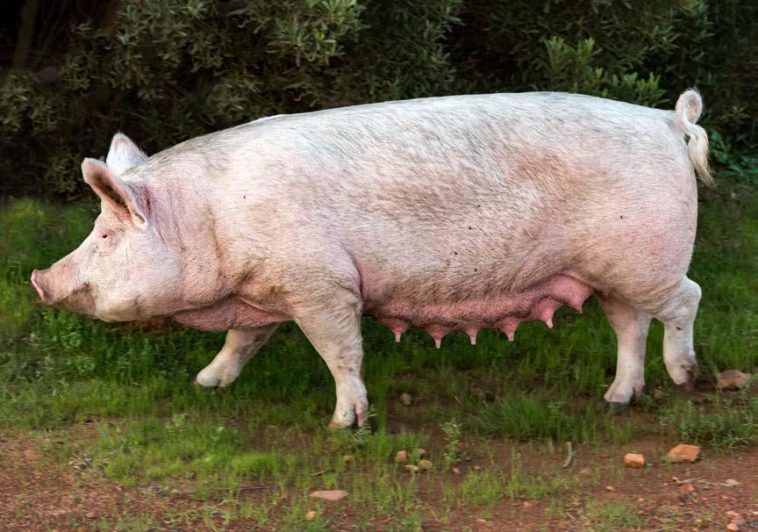The success of a piggery lies in the quality of the breeding programme and breeding practices. Using superior genetics and efficient culling will ensure that your pigs are genetically sound, but also limit the costs of keeping pigs that are not producing optimally.
Only the best among the young growing female animals on the farm must be selected and kept for breeding. The following guideline will aid in making your piggery more profitable. Select breeding gilts from sows that produce large litters with above average growth rate, and carcasses with a low fat content.
The following characteristics should be considered when selecting gilts:
- Strong, straight legs with large, even-sized claws.
- Gilts should walk straight and well, and stand up on their claws without collapsing at the pastern joints just above the foot.
- A well-formed vulva and six wellshaped, prominent teats on each side of the belly. The teats should start well forward and be spaced evenly to allow adequate suckling space for the piglets.
- A well-developed ham, good length with light shoulders and head.
Replacement of gilts
If replacement gilts are not available when needed or if they do not comply with the requirements, the gilts should be bought. It is advisable to buy them from the same farm where the boars come from, because in this way the previous owner can advise you on the breeding policy for a small pig farm.

Gilt management before first service
Gilts are usually selected for breeding at five to six months of age. The pigs not selected can then be sold as baconers at a live weight of about 85 to 90 kg. The selected gilts are reared to weigh between 120 and 130 kg at seven and a half to eight months of age when they are ready to be served by a boar for the first time.
Gilts have to be in a good condition to produce large litters (8 to 10 or more healthy piglets) and should not be too fat when they are ready for mating. Therefore, they should be fed about 2 kg of meal per day from the time of selection until a boar serves them at the age of eight months. This will also ensure that not too much fat is lost during the suckling period and that they are in a good condition after weaning their first litters.
Culling of sows
Culled sows must be removed from the farm and sold as soon as possible. It does not pay to keep culled sows on the farm to gain weight before they are sold. As soon as the sow’s udder has returned to normal after weaning, it is wise to send her to the abattoir. A replacement gilt can then be brought into the herd immediately. Reasons for removing sows from the herd are usually not known beforehand.
Therefore, replacement gilts should always be available so that the number of breeding sows on the farm always remains the same. Sows that farrow regularly and rear large litters (nine or more piglets) and are free of other problems and diseases should rear five to six or even more litters before they have to be removed from the herd. A sow is usually removed from the herd when her litters start to become smaller (two small litters in succession) or when she does not readily come on heat after weaning.

(Photo: pixabay.com)
For further information, contact your animal health technician, state or private veterinarian or Animal Health for Developing Farmers ARC Onderstepoort Veterinary Institute on +27(0)12-529-9158 or The Resource Centre, +27(0)12-319-7141 or +27(0)12-319-7085.
We thank the South African Department of Agriculture for the information provided to the readers of Botswana, Namibia and Zimbabwe in this article series. For more information visit their website at https://www.daff.gov.za/.








